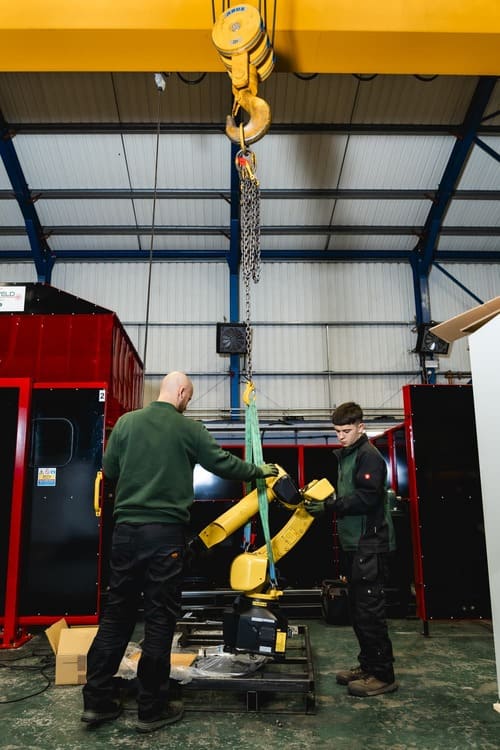
Introduction
The manufacturing industry is in the midst of a major transformation, driven by rapid advancements in automation and robotics. Among the most impactful innovations is the robot welder — a sophisticated system that combines precision engineering, advanced programming, and powerful welding capabilities. From improving productivity to ensuring consistent weld quality, robot welding is changing the way manufacturers approach their operations.
What Is a Robot Welder?
A robot welder is an automated welding system that uses robotic arms, sensors, and control software to perform welding tasks with high precision and repeatability. These machines can carry out a range of welding processes, including MIG, TIG, and spot welding, often at speeds far beyond human capability.
Unlike manual welding, where skill levels can vary from operator to operator, robot welders deliver consistent results every time. This makes them invaluable in industries where quality and repeatability are critical, such as automotive, aerospace, and heavy equipment manufacturing.
Benefits of Robot Welding
1. Consistent Quality
Manual welding can be affected by fatigue, skill levels, and environmental conditions. A robot welder operates with programmed accuracy, producing welds that meet exact specifications every time. This reduces the likelihood of defects and rework, improving overall product quality.
2. Increased Productivity
Robot welders can work continuously without breaks, significantly reducing cycle times. This allows manufacturers to increase throughput without expanding their workforce, making it easier to meet growing demand.
3. Improved Workplace Safety
Welding can expose workers to high heat, fumes, and ultraviolet light. By automating the process, a robot welder keeps operators at a safe distance from these hazards, creating a safer work environment.
4. Cost Efficiency
While the initial investment in a robot welding system can be significant, the long-term savings are substantial. Reduced waste, lower labour costs, and higher output can quickly offset the purchase and installation expenses.
Applications Across Industries
Robot welders are being adopted across a wide range of industries, each reaping unique benefits from the technology:
- Automotive Manufacturing – Used extensively in car body assembly lines for fast, precise welds.
- Aerospace – Ensures structural integrity and compliance with stringent quality standards.
- Construction Equipment – Produces strong, durable welds for heavy-duty machinery.
- Metal Fabrication – Supports custom manufacturing with high accuracy and repeatability.
Integration with Existing Systems
One of the key advantages of modern robot welding technology is its ability to integrate with existing production systems. Through robot systems integration, businesses can ensure that their welding operations are seamlessly connected with other manufacturing processes, such as cutting, forming, and assembly. This integration not only improves workflow efficiency but also makes it easier to monitor and optimise production in real time.
Overcoming Common Challenges
Although robot welders offer many benefits, businesses must address several challenges to maximise their return on investment:
- Initial Setup Costs – While high upfront costs can be a barrier, financing options and productivity gains help mitigate the impact.
- Training Requirements – Staff need training to program, operate, and maintain the systems effectively.
- Maintenance – Regular servicing is essential to keep equipment running at peak performance.
By working with experienced integration partners, manufacturers can overcome these hurdles and ensure a smooth transition to automated welding.
The Future of Robot Welding
As technology evolves, robot welders are becoming even more advanced. Developments in artificial intelligence and machine learning are enabling these systems to adapt to new welding tasks without extensive reprogramming. Enhanced sensors and vision systems will improve accuracy, while cloud-based monitoring tools will provide real-time insights into performance and maintenance needs.
In the near future, we can expect robot welding to become more accessible to small and medium-sized manufacturers, thanks to lower costs and modular designs. This democratisation of advanced welding technology will help level the playing field, enabling businesses of all sizes to compete on quality and efficiency.
Conclusion
The robot welder is more than just a tool — it is a game-changing innovation that is redefining modern manufacturing. By delivering consistent quality, increasing productivity, and improving safety, robot welding technology is helping businesses meet the challenges of today’s competitive marketplace. As integration capabilities and smart technologies continue to evolve, robot welders will play an even greater role in shaping the future of production.
